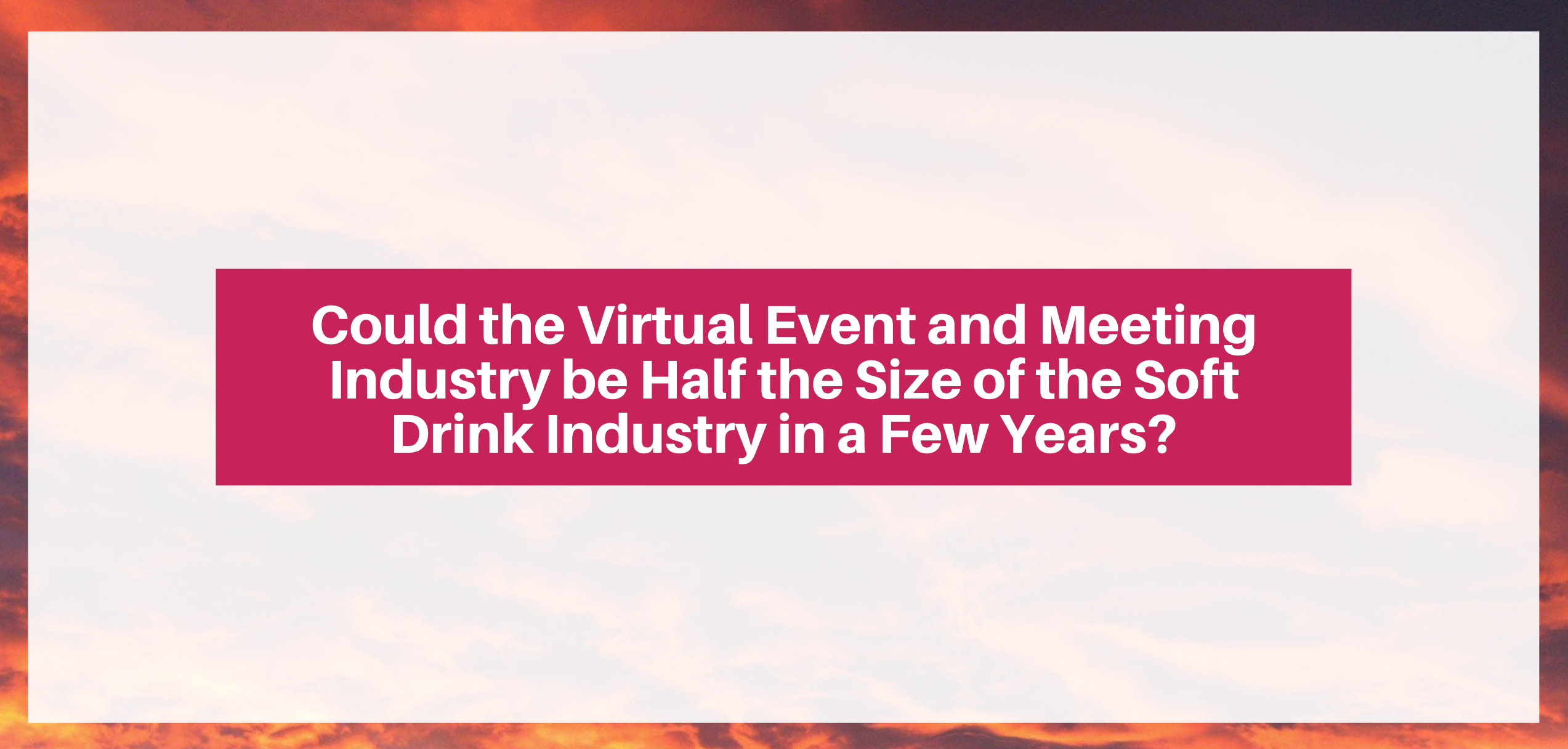Virtual events are a means to attract and bind customers, improve customer satisfaction and customer loyalty and to achieve similar results with employees and partners. The reality is that with virtual events and meetings you can do this while decreasing travel costs—which can be about 50% of the cost of any meeting. According to the US Travel Association of the $175 billion spent on meetings in the US, 54% is travel and lodging related and my guess would be that it is about the same percent of the $124 billion spent on trade shows. So the opportunity for travel savings is some percentage of $150 billion every year and even though we are all sick of hearing the word billion, it’s big.
Now there are lots of savings offered by virtual event solutions that address the other $150 billion—for example potentially lower marketing, production costs, labor, security, rent, F&B, entertainment, etc. but those are more variable. As I’ve indicated before, I don’t think virtual events will replace physical events but the models are still being developed and we don’t know how significant the savings will be but again, another $150 billion is a lot of potential savings.
The obvious benefit of virtual events attract customers otherwise known as “lead generation”, is widely reported in studies, articles and whitepapers not to mention customer testimonials. In fact, over the last few years, that was the way virtual event platform providers went to market in part because the lead generation results were so measurable and consistent. That’s likely to remain the case for lead generation but not the way virtual event platform companies will go to market because they see that lead generation is just the tip of the iceberg.
And that will be the topic of my next blog…the systematic marketing opportunity with virtual events and meetings that can bind customers and companies while increasing their value to customers, improving customer satisfaction and customer loyalty. And yes, to achieve similar results with employees and partners. Which makes me ponder the question of how big this virtual events and virtual meeting space will be? If the opportunity in the US is $150 billion annually (after travel is removed) could virtual events account for as little as 10% of that number? Wow, $15 billion is a huge number…that’s just about half of the global soft drink market I just read in BusinessWeek.
